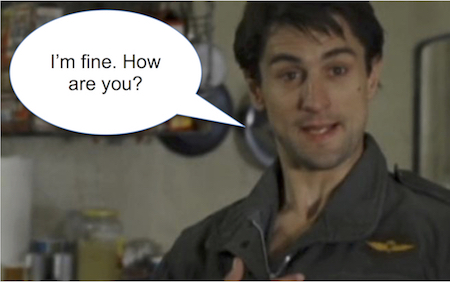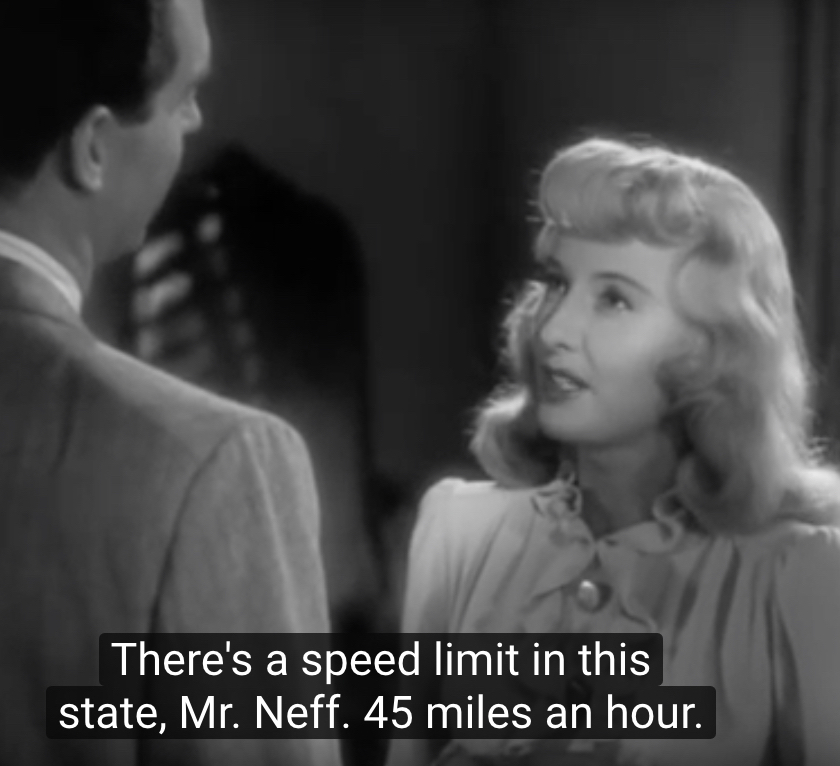 “You talkin’ to me?”
“You talkin’ to me?”
In one of the most memorable examples of dialogue in film history, Robert DeNiro looks in the mirror and tells us who Travis Bickle is in four simple words. Four words and we knew that Travis Bickle was paranoid and insecure. To be pitied and to be feared.
Unfortunately for most writers, Robert DeNiro — or Meryl Streep — will probably never speak the words we write for our characters. Breathing life into them. So our words had better not just lie there on the page.
Probably the best tip anyone has ever given me on dialogue was to just read the words out loud. Act them out — okay, maybe not if you’re writing in a coffee shop — but do it at home. That may be the quickest way to get a sense of whether or not they sound real — or fake and awkward. Nobody knows your characters as well as you do and you’ll be able to tell if their words ring true.
Good dialogue. Like the famous Supreme Court justice line about obscenity — “I know it when I see it.” Memorable dialogue is easy to identify. We know it when we hear it.
 “I made him an offer he couldn’t refuse.”
“I made him an offer he couldn’t refuse.”
“You’re gonna need a bigger boat.”
“Fasten your seatbelts — it’s going to be a bumpy night.”
From a lesser-known screenplay, but a great line, and one of my personal faves: “You’re not that smart. I like that in a man.” — Kathleen Turner in Body Heat. (Script by Lawrence Kasdan.)
But good dialogue is not just coming up with a memorable one-liner or catchy phrase. In fact, sometimes we can get too fond of our catchy lines.
Good dialogue should support the prose. It generally drives home a point or punctuates the narrative.
One of the things all dialogue does is give the reader a break. Their brains and their eyeballs. Long stretches of prose can be beautiful. Powerful. But none of us is James Joyce. And it’s not 1918. Stream-of-consciousness narrative can be exhausting to read. Chances are, Ulysses wouldn’t even get published today. Jane Austen and Thomas Hardy wrote long passages without dialogue — but very few contemporary novelists even try.
Kate Atkinson is one who does. In her book Case Histories — one of the best books, mystery or otherwise that I’ve read in the last 10 years — she goes 25 pages before having a character say even one word. And when she does, it’s just one word — “Olivia.” But most of us can’t get away with that.
Our readers need to come up for air. They expect a visual relief as well as a mental one. That doesn’t mean you can fill the page with such pithy lines as “Hi, my name is” “Please, let me introduce” “I am fine. How are you?” Unless you are intentionally trying to depict an extremely boring character
Which tells us something else we know about dialogue — it should feel like real speech — but not BE real speech.
At the risk of getting political, it is the way one of our recently elected officials speaks— it’s not pretty. And it’s not the most effective way to communicate. Believe me — you don’t want real speech, right?
Dialogue is not the literary equivalent of Hamburger Helper. Stuff that comes in between the good stuff. It needs to work every bit as hard as every other word in your manuscript.
So here are five things your dialogue can and should do for you:
▪ Illuminate character
▪ Reveal information
▪ Advance plot
▪ Increase tension and conflict, and
▪Add to a sense of place and time.
If your dialogue doesn’t do any of those things maybe you should, reconsider why it’s on the page.

—Rosemary Harris
Rosemary Harris is a former president of MWA-NY and of Sisters in Crime New England. She is the author of the Dirty Business mystery series featuring amateur sleuth Paula Holliday.
